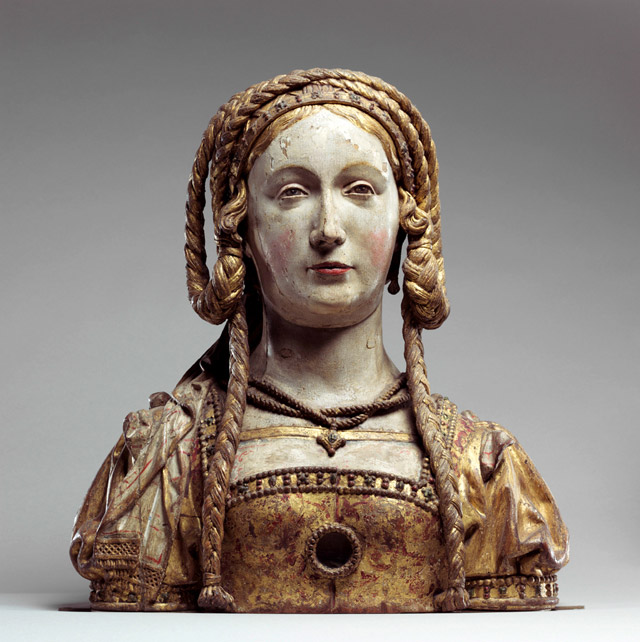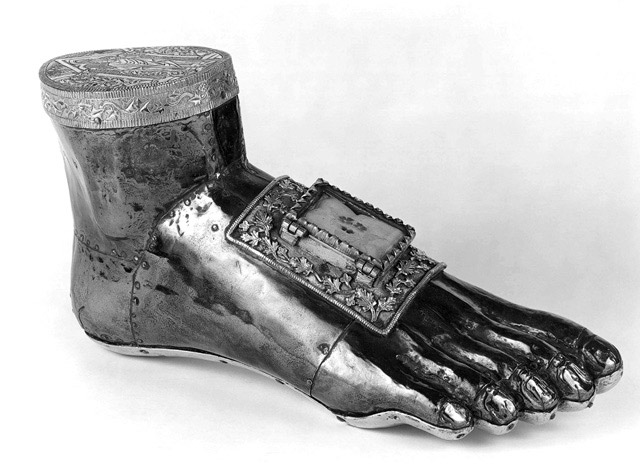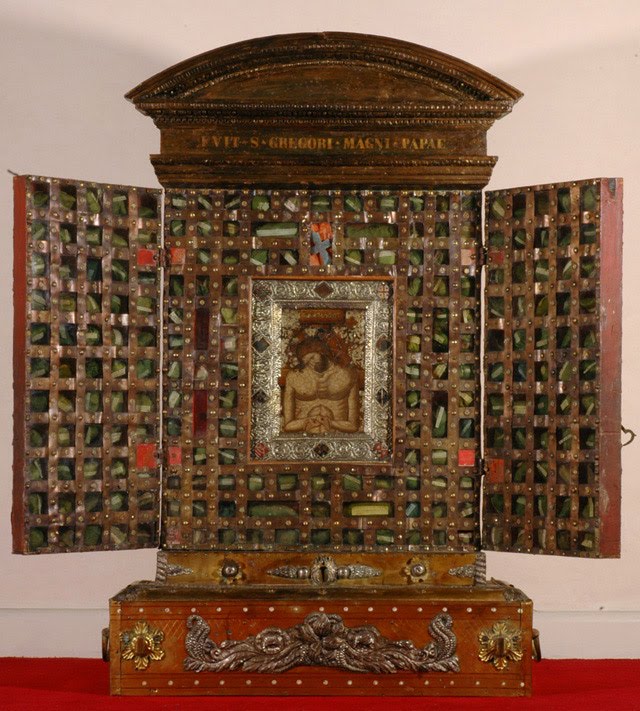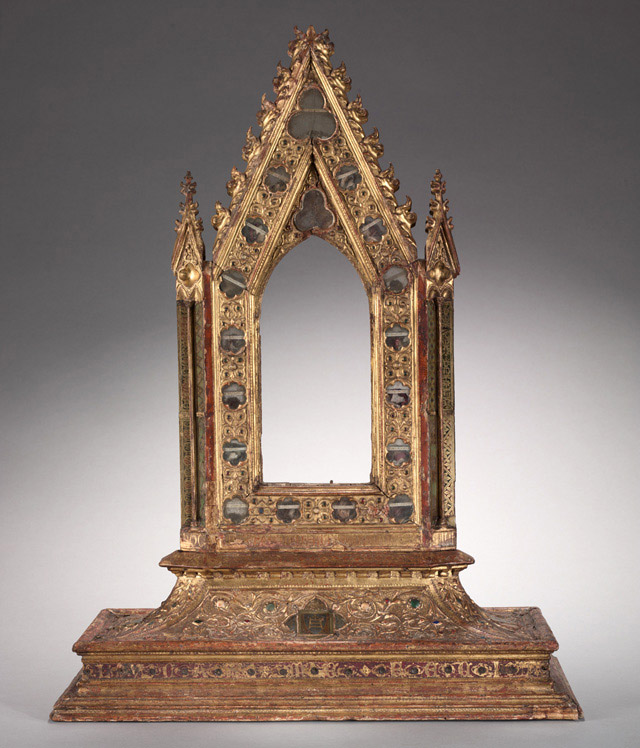How Wings Are Attached to the Backs of Angels
Craig Welch, Canada, 1996, 11 min 5 s
The main protagonist of this short, surreal film is a man obsessed with control. In an automated world drained of all emotion, he is tortured by vague longings.


How Wings Are Attached to the Backs of Angels
Craig Welch, Canada, 1996, 11 min 5 s
The main protagonist of this short, surreal film is a man obsessed with control. In an automated world drained of all emotion, he is tortured by vague longings.


Trouvé sur le Morbid Anatomy :





On view until May 15th of this year at the Walters Art Museum in Baltimore, a new exhibition of relics and reliquaries entitled « Treasures of Heaven: Saints, Relics and Devotion in Medieval Europe«
To get a sense of the kinds of treasures that await, check out the Treasures of Heaven « Digital Monograph » (from which these images were drawn) by clicking here.
… ‘Reliquaries proclaimed the special status of their sacred contents to worshipers and pilgrims, and for this reason, were often objects of artistic innovation, expressions of civic and religious identity, and focal points of ritual action. This exhibition will feature 133 metalworks, sculptures, paintings and illuminated manuscripts from Late Antiquity through the Reformation and beyond. It will explore the emergence and transformation of several key types of reliquary, moving from an age in which saintly remains were enshrined within closed containers to an era in which relics were increasingly presented directly to worshipers’ …
… « As early as the second century AD, the relics of Christian saints – including their bones, ashes and other bodily remains – were thought to be more valuable than the most precious gemstones. They were believed to be a conduit for the power of the saints and to provide a direct link between the living faithful and God, » said Martina Bagnoli, Robert and Nancy Hall associate curator of medieval art and exhibition co-curator. « These remains were treated with reverence and often enshrined in containers that used luxurious and precious materials to proclaim the relics’ importance. »
Treasures of Heaven
Feb. 13, 2011 – May 15th, 2011
Walters Art Museum, Baltimore, Maryland
Cutting Edge: The Virgin Daughters
Originally broadcast on September 25, 2008 on Channel 4, UK, 48 min
‘Cutting Edge explores the purity movement in America, where one girl in every six pledges to remain a virgin, or to save her first kiss, until her wedding day. Award-winning documentary-maker Jane Treays investigates whether this decision is made by the girls themselves or their parents, and follows a group of fathers and daughters as they prepare to attend a ‘purity ball’ in Colorado Springs, run by Randy Wilson and his wife Lisa.’
‘À l’automne 1975, Second regard entrait en ondes pour la première fois. 35 ans plus tard ou 1818 émissions plus loin, ça saute aux yeux : nous avons beaucoup changé. Religion (rapport au religieux), langue, identité, mondialisation, laïcité, immigration. Cette semaine, Alain Crevier rencontre Gérard Bouchard.’
Émission du dimanche 20 mars 2011, diffusée à 13h30 sur les ondes de Radio-Canada. Regarder.
… ‘Nous entrons dans une aire extrêmement difficile; Je sais pas si tout le monde en est conscient, probablement, mais l’avenir du français au Québec dans les cinquante prochaines années là, ça va être quelque chose d’assez étonnant. On pourra pas programmer notre survie linguistique comme on l’a fait dans le passé’ …
***
Repost du billet publié le 9 juillet 2010 :
Tranquillement, pas vite
Guy L. Coté, Canada, 1972, 148 min 11 s
Long métrage documentaire en deux parties sur l’évolution de la religion au début des années 1970, Tranquillement, pas vite (1re partie) – Que s’est-il donc passé? retrace la désagrégation et la mutation rapides de la religion catholique au Québec. Des paroissiens se réunissent et discutent de l’avenir de leur église, de sa chapelle et de ses services. Le manque de financement est au centre de la discussion, de même que la place accordée aux rassemblements communautaires payants, telles les parties de bingo, et le nombre croissant de prêtres se retrouvant sans emploi.
Tranquillement, pas vite (2e partie) – Communauté de base présente huit mois d’une expérience originale de reconstruction religieuse : celle de la communauté chrétienne de base, sise à Montréal.

‘The balance of day and night’
TRAVAUX EN COURS:

JHS Littérature Apocryphe MMXI
Patrimoine vs. Identité culturelle

Dios Mio! Été MMXI
Pour l’oeil, contre l’oeil. Pour l’esprit, contre l’esprit

Mi Amore ‘the Lamb’ (2005) & ‘the Lion’ (2007) en studio @ Godcity (vidéos)